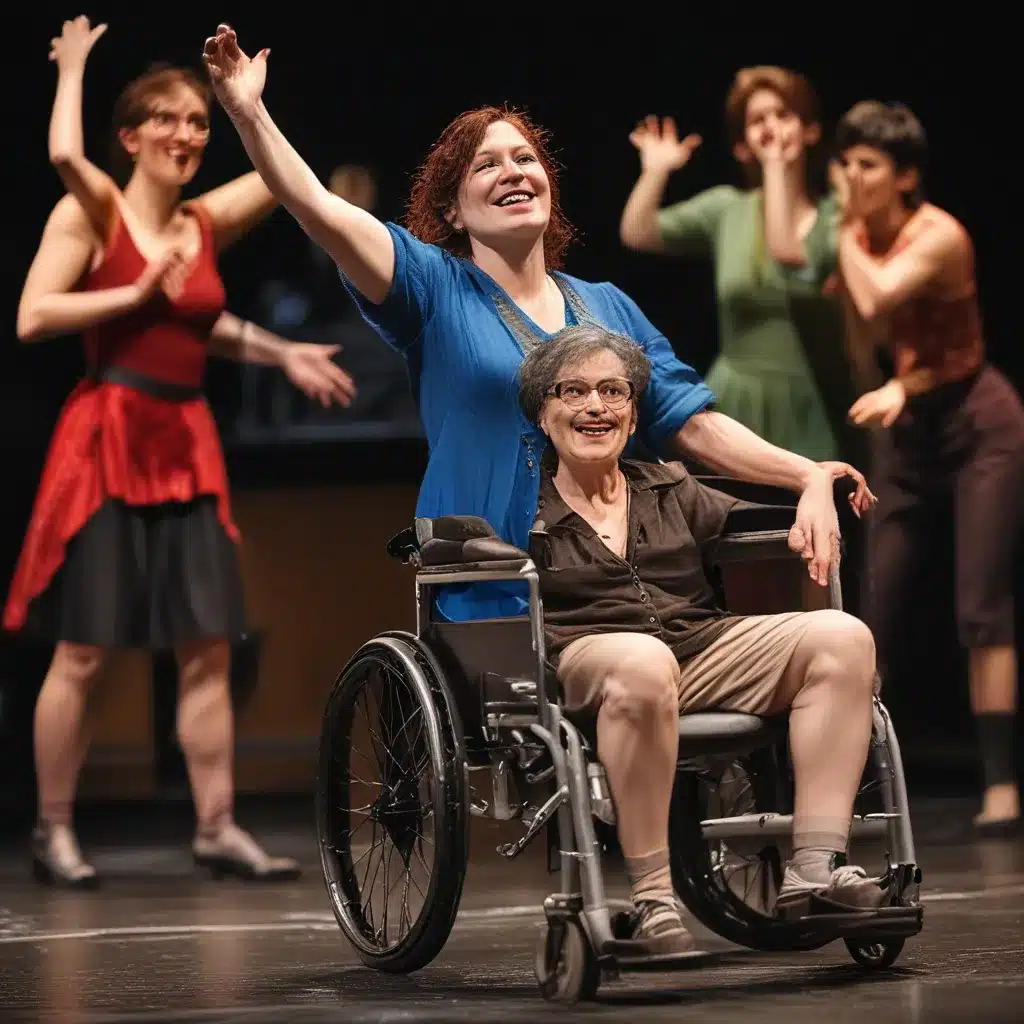
Celebrating Neurodiversity on the Stage
As an actor with cerebral palsy, I’ve had the privilege of witnessing firsthand the transformative power of theater for the neurodiverse community. Theater doesn’t just provide a creative outlet – it can be a lifeline, a sanctuary, and a platform for amplifying diverse perspectives. And in recent years, the theater community has made significant strides towards becoming a more inclusive environment, welcoming individuals of all backgrounds and abilities.
However, there’s still work to be done when it comes to embracing neurodiversity on the stage. Too often, disabled characters are relegated to mere symbols or metaphors, their humanity overlooked in service of a nondisabled writer’s grand ideas. That needs to change. At the Musical Theater Center, we’re committed to empowering disabled artists and creating accessible, sensory-friendly spaces where everyone can thrive.
The Power of Neurodivergent Perspectives
Think about it – as artists, we strive for innovation and unconventional thinking. And who better to provide that than individuals who experience the world differently? People on the autism spectrum or with other neurodivergent traits may approach a situation in unexpected ways, offering fresh insights and perspectives that can truly enrich the creative process.
Take my friend Sebastian, for example. When I first saw him perform on a Broadway stage, it was a pivotal moment for me. There, standing with a walker like mine, was a young actor living out a dream I had once been made to believe was impossible. The sheer power of that representation was palpable – not just for me, but for anyone who has struggled to see themselves reflected on the stage.
Removing Barriers, Empowering Artists
So how do we create more of those transformative moments? It starts with removing the barriers that so often stand in the way of neurodivergent artists. That means offering sensory-friendly performances, providing clear social narratives, and allowing for freedom of movement during shows. It means seeking out the expertise of neurodivergent leaders and collaborating to ensure our productions are truly accessible and accommodating.
And it means going beyond the bare minimum. Don’t just offer one sensory-friendly show per run – double it, or even triple it. Make accessibility a priority in your budgets, not an afterthought. Send targeted invitations to disability organizations, and make it clear in your marketing that disabled artists and audiences are not just welcome, but celebrated.
Cultivating Inclusive Spaces
Of course, accessibility is about more than just physical accommodations. It’s about cultivating a culture of inclusion, where neurodivergent individuals feel empowered to share their unique talents and perspectives. That means resisting the urge to label disabled artists as “inspiring” – a well-meaning but often dehumanizing trope. Instead, we should see them for the multifaceted, accomplished individuals they are.
Fostering Community, Empowering Change
Across Indonesia, we’re seeing incredible initiatives that are doing just that. In Bandung, the social enterprise Tab Space is empowering illustrators with disabilities, connecting them with clients and championing their work. In Yogyakarta, Jogja Disability Art and Bawayang are creating vibrant communities for disabled artists, from visual arts to performance.
And in Bali, initiatives like Rumah Berdaya and Rumah Teratai are empowering individuals with mental health challenges and vision loss through the transformative power of art. These are the kinds of grassroots efforts that are truly moving the needle when it comes to inclusion.
Embracing a Future of Accessibility
Of course, it’s not just community organizations leading the charge. Major institutions and events are also stepping up to the plate. Festival Bebas Batas 2018 at the National Gallery, the 8th PENDIDIK Forum by Museum MACAN, and ArtJog 2022 have all made concerted efforts to create accessible, inclusive spaces for disabled artists and audiences.
It’s an exciting time, to be sure. But the work is far from over. As the theater community continues to evolve, we must remain vigilant in our pursuit of true accessibility and representation. Because when we empower disabled artists to share their stories and perspectives, we don’t just enrich the creative landscape – we build a more equitable, empathetic world for all.
So let’s keep pushing forward, my friends. The stage is waiting, and it’s high time we fill it with the vibrant tapestry of neurodiversity.

